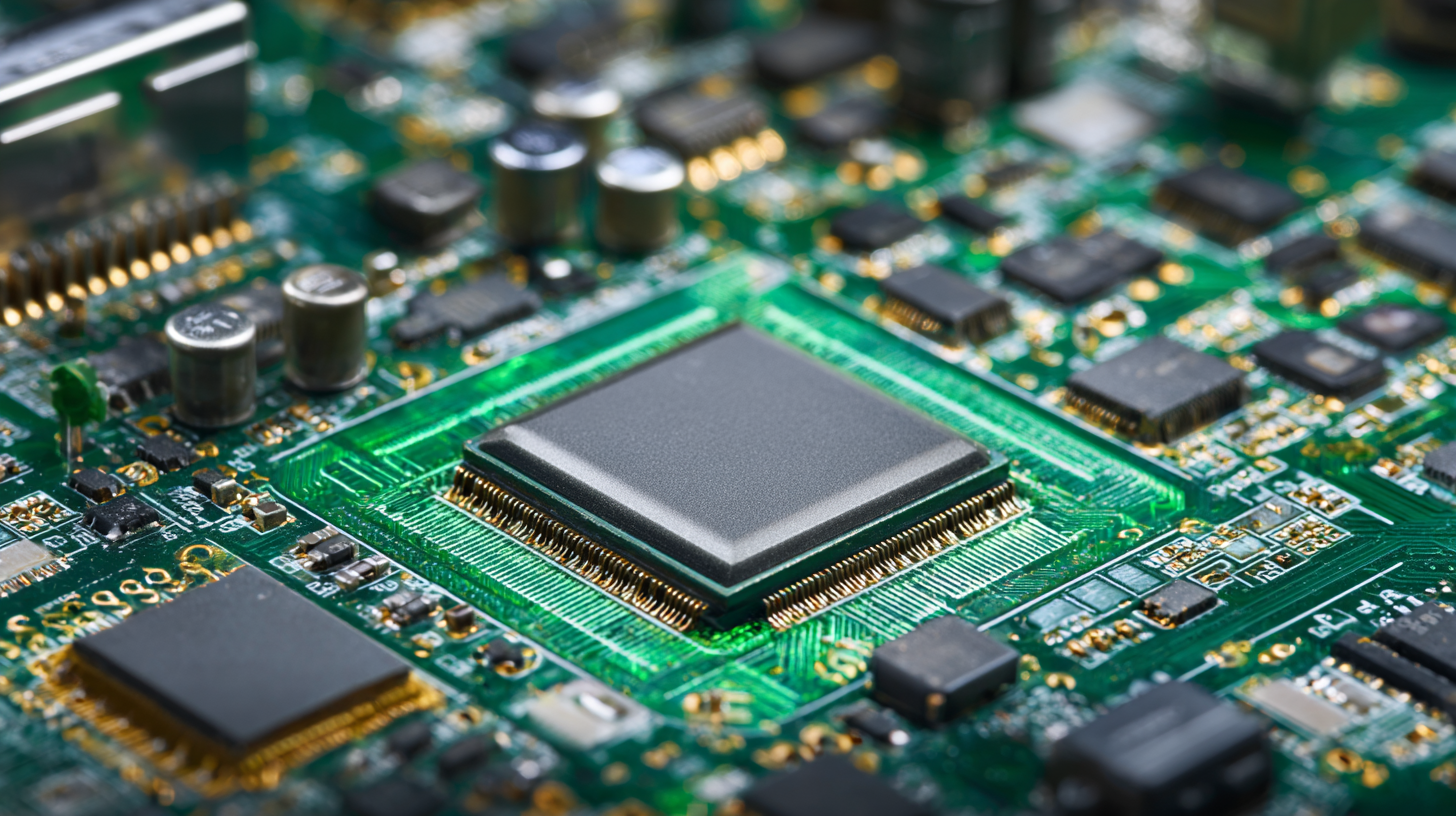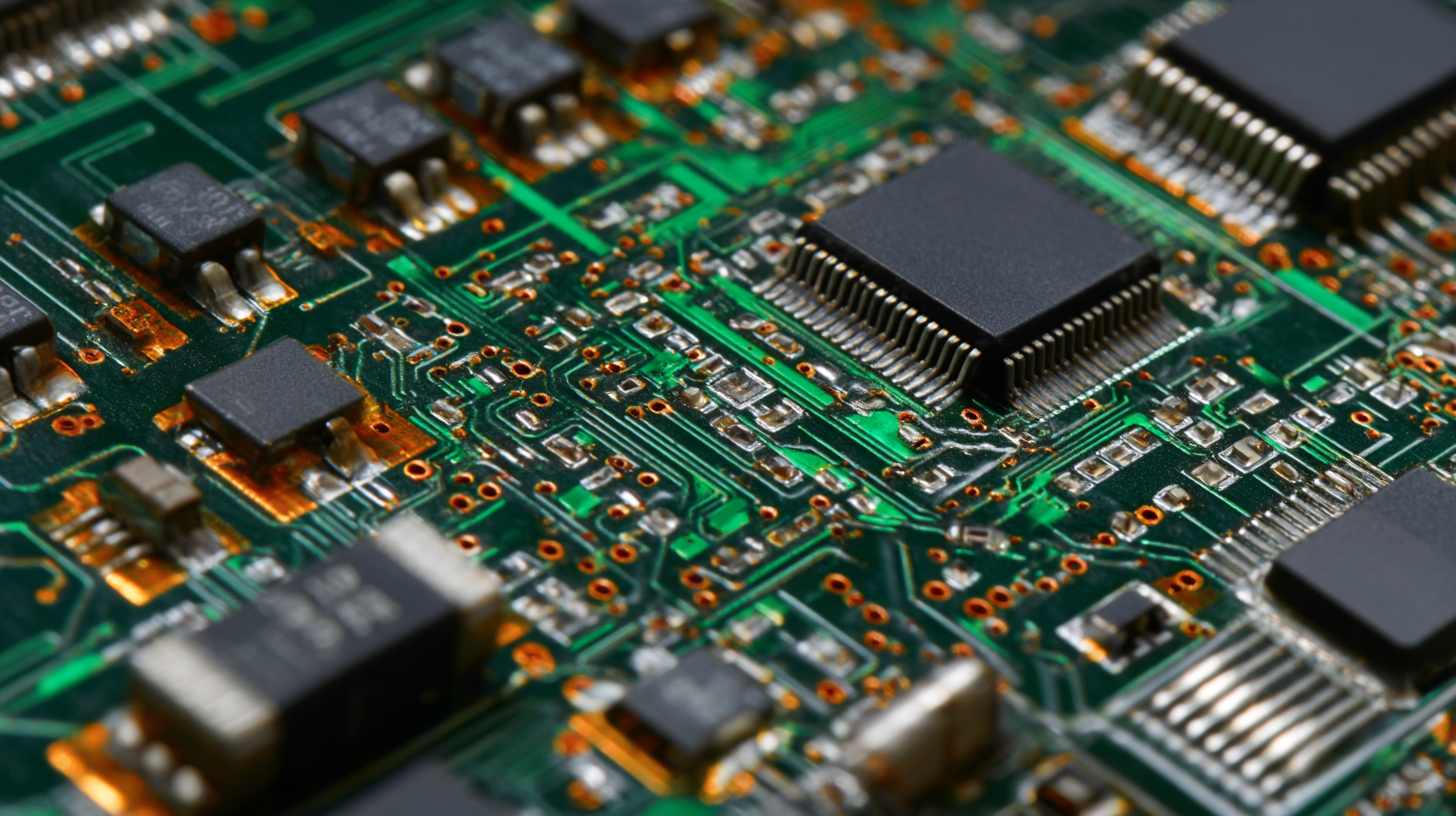In the rapidly evolving electronics industry, the demand for advanced PCB solutions is surging, with the global PCB market projected to reach $93.2 billion by 2024, as reported by industry analysts. This growth underscores the critical need for robust after-sales support and maintenance strategies that can significantly enhance the return on investment for businesses.

Effective management of maintenance costs not only ensures prolonged product lifespan but also mitigates the risks associated with operational downtimes. In this blog, we will explore the crucial aspects of after-sales support in the context of advanced PCB technology, including insights into import and export certification processes, which are essential for compliance and market competitiveness.
By leveraging advanced PCB expertise and tailored maintenance strategies, companies can maximize their investments and maintain a competitive edge in a market that demands innovation and efficiency.
Maximizing lifecycle value through advanced PCB (Printed Circuit Board) maintenance and support is crucial in today’s fast-paced electronics industry. Research indicates that proper maintenance practices can increase the lifespan of PCBs by up to 30%. According to a report by the IPC (Institute of Printed Circuits), about 70% of failures in electronic circuits can be traced back to design issues and inadequate maintenance protocols. Implementing a robust after-sales support system can help mitigate these risks, ensuring that performance remains optimal throughout the product's lifecycle.
Furthermore, the financial implications of effective PCB support cannot be overstated. A study from the Electronics Industry Citizenship Coalition (EICC) found that organizations that invest in comprehensive maintenance solutions can reduce their operating costs by as much as 25%. By understanding the specific maintenance and support benefits, companies are able to maximize their return on investment and enhance overall productivity. For instance, regular evaluations and timely interventions not only prevent unexpected downtimes but also foster greater efficiency, ultimately leading to improved profitability.
In today's rapidly evolving landscape, the significance of advanced after-sales support in PCB manufacturing cannot be overstated. As industries heavily rely on electronics, optimizing maintenance costs emerges as a critical factor. Effective after-sales support not only enhances product longevity but also minimizes downtimes, significantly impacting operational efficiencies. By providing timely assistance and insights into potential maintenance expenditures, manufacturers can better manage their resources and foster stronger client relationships.
As global supply chains grapple with challenges, especially concerning tariffs and economic uncertainties, the role of PCB manufacturers in sustaining competitive advantage becomes even more crucial. Investments directed toward robust after-sales support are not mere costs; they translate into economic resilience. As sectors adapt to change—whether through embracing generative AI or optimizing production techniques—those equipped with strong support infrastructures can leverage these shifts to their advantage. Aligning after-sales strategies with emerging market trends ensures that manufacturers not only weather current economic shifts but also position themselves for future growth.
In the realm of PCB maintenance, understanding the cost analysis metrics is crucial for maximizing investment. Recent studies indicate that effective maintenance strategies can lead to operational efficiencies, reducing downtime and extending the lifecycle of PCB systems. For instance, predictive maintenance technologies, supported by advancements in IoT and data analytics, have shown promise in minimizing unexpected failures. This proactive approach has been linked to a cost reduction of up to 30% in maintenance expenses over a typical operational cycle.
Furthermore, industry reports highlight that companies utilizing advanced metrics to track maintenance-related costs can enhance their operational performance substantially. For example, organizations that incorporate cost management frameworks alongside maintenance schedules have reported a significant improvement in productivity, reflected in a 15% increase in output efficiency. As companies continue to embrace Industry 4.0 technologies, leveraging data-driven insights will be essential to ensure that their PCB investments yield maximum returns.
This chart illustrates the maintenance costs associated with PCB over a span of five years. Analyzing these costs aids in maximizing investment and identifying operational efficiency in production processes.
The landscape of Printed Circuit Board (PCB) after-sales support is evolving rapidly, driven by innovations catering to global markets. With the PCB Assembly Market projected to reach USD 55.33 billion by 2034, growing at a CAGR of 3.44%, companies must prioritize advanced after-sales support to stay competitive. This need is further underscored by the surge in demand for intelligent driving technologies such as Advanced Driver Assistance Systems (ADAS), which relies heavily on sophisticated PCB designs and assembly techniques.
As the electric vehicle market expands, the necessity for robust charging infrastructure is growing. This requires not only advanced PCB technologies but also comprehensive maintenance support to ensure reliability and safety. Notably, the Substrate-Like PCB market is anticipated to grow explosively, reaching $7.16 billion by 2031, with a CAGR of 13.4% from 2024–2031. Such statistics highlight the importance of integrating innovative after-sales strategies that optimize performance and cost-efficiency while facilitating technological advancements in various applications across the electronics sector.

 In today’s competitive landscape, maximizing return on investment in printed circuit boards (PCBs) is essential. Case studies illustrate how companies have successfully enhanced their PCB investment through tailored after-sales support solutions. According to a report by IPC, companies that engage in proactive management of PCB maintenance can reduce downtime by up to 30%, which translates into significant cost savings and improved production efficiency.
In today’s competitive landscape, maximizing return on investment in printed circuit boards (PCBs) is essential. Case studies illustrate how companies have successfully enhanced their PCB investment through tailored after-sales support solutions. According to a report by IPC, companies that engage in proactive management of PCB maintenance can reduce downtime by up to 30%, which translates into significant cost savings and improved production efficiency.
One notable example is a leading telecommunications firm that implemented a support strategy integrating real-time monitoring and predictive maintenance for their PCB systems. This approach not only minimized unexpected failures but also optimized the lifecycle of the components, yielding a 25% reduction in maintenance costs over three years. Similarly, a manufacturer in the automotive sector leveraged advanced data analytics to streamline their PCB supply chain, achieving a 20% reduction in waste and ensuring a quicker time-to-market for their new products. These cases exemplify how investing in advanced after-sales support can be a game changer for businesses looking to maximize the benefits of their PCB investments.
Address :
Absolute Electronics Services LLC
330 W Fay Ave
Addison, IL – 60101
2025 Absolute Electronics Services, All Rights Reserved